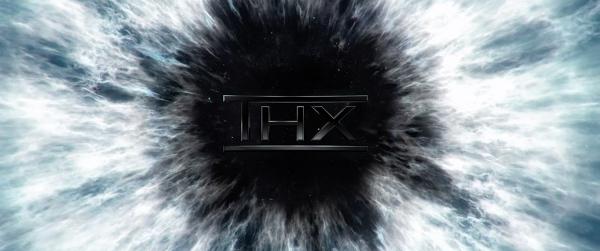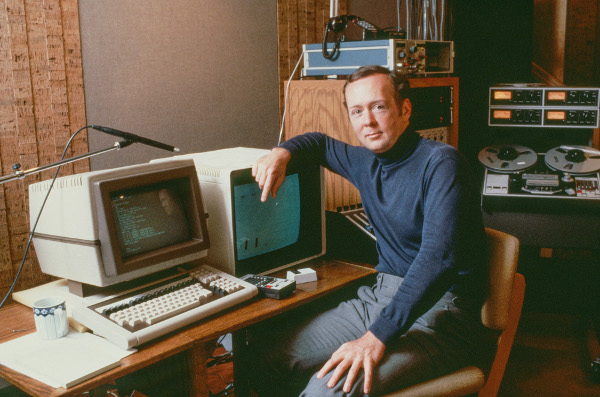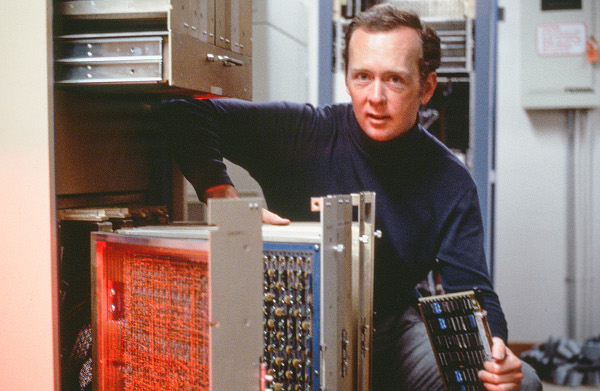Finding Deep Note: The Story Behind THX’s Famous Sonic Swell

S&V: It’s been more than 30 years since moviegoers first experienced “Deep Note,” the signature sound of THX. What was the original intent behind it?
Andy Moorer: There is a bit of a story behind THX and the logo theme. At the release of Empire Strikes Back, some of the audio people at Lucasfilm were sent to one of the premier cinemas in San Francisco to make sure the sound was okay. Tomlinson Holman, inventor of the original THX audio system, was part of that crew. They first thing they wanted to check were the three large Altec Lansing “Voice of the Theater” speakers behind the screen. They found three speakers all right but only one was set up correctly. The second was facing backwards and the third had fallen over and was not connected at all! Tom (Tomlinson) was so horrified that he vowed to do something to make sure the theater experience would be as close as possible to what professional sound mixers heard. That was how the THX sound system was born.

The system was to have its premiere at the release of Return of the Jedi, which was mixed on the first THX sound system at Lucasfilm’s post-production facilities in San Rafael, CA. They wanted something to announce the new sound system, so they decided to produce a short “logo” video (with sound). Lucasfilm has a tradition of “recruiting from within” by giving promising talent small projects to help them advance in their career. The job was given to an ambitious and talented fellow, who immediately threw himself into the work. He was fascinated by animation and produced an absolutely stunning piece of video animation. I don’t know this for sure, but I think he spent all the money on the animation and didn’t have anything left to hire a big-name film-music composer, so he came to me with the task. I was a staff audio engineer so I didn’t really add anything to the budget. He said he wanted something that “comes out of nowhere and gets really, really big.” As soon as he described it, I knew exactly what I wanted to do.
So, I guess you could say that the original intent was to accompany the animation for the first THX.
S&V: When and where did “Deep Note” first appear? How did people respond to it initially?
AM: It appeared in the big 70mm theaters around the country that had agreed to install a THX sound system. There were about 160 such theaters at the time of the release of Return of the Jedi. Of course, the movie was so highly anticipated that the first few presentations of Deep Note were inaudible over the applause at the start of the feature. It wasn’t until a bit later that folks started to notice the trailer. It was a very different kind of sound than folks were used to so it took a while to register.
S&V: Who coined the phrase “Deep Note”? Does it go by any other names?
AM: That was my name for it. It was a riff on the computer in Douglas Adams’ Hitchhikers Guide to the Galaxy, which was named “Deep Thought.” The folks at THX subsequently gave it the formal name “THX Logo Theme” and various trailers were created.
S&V: When did it occur to you that you had a “hit” on your hands—an icon of the modern movie theater?
AM: For me personally, it was years. I was essentially anonymous. Nobody but my close acquaintances knew I was the author. I did publish a page on my web site in the late 90’s, but it wasn’t until I got an email from Tom Whitwell of the (now defunct) “Tiny Music Makers” blog that things started happening. He published my reply on the story of “Deep Note” on his blog. I started to get some fan mail. It slowly dawned on me that, for many people, it wasn’t just that thing at the beginning of the feature they had to endure before watching the movie. Folks were actually seeking it out. Later, when YouTube became popular, a number of people were either recreating it or sampling it. It was inspiring. I figured I had really hit the big time when I became a question on Jeopardy (“James Moorer created this cinematic Vroom”—and, no, the lady didn’t get it. She did guess “What is Dolby,” which was pretty astute).

S&V: Technically speaking, how did you create that sensational swell of sound?
AM: I was part of the Lucasfilm Computer Division. My group was given no less a task than to revolutionize film sound. We didn’t manage to do so, due to technological limitations of the time, but the system we built definitely set a direction that is still common practice. We had spent two years designing, building, and programming a large-scale audio processor we called the “ASP” (Audio Signal Processor). It was a full 6-foot rack of computer hardware that was used for special effects in a number of films. When I was given the task of producing the logo theme, it was perfectly natural for me to use the ASP. We had programmed in so much audio processing power that it only took me about four days to program and “tune” the piece. The control program was 325 lines of C-code plus 298 more lines that set up the “audio patch” of the ASP. (My apologies to Tom Whitwell—I had said in my email to him that the program was 20,000 lines of code. I guess it felt like 20,000 lines at the time, but it was only 325 lines.)
























































